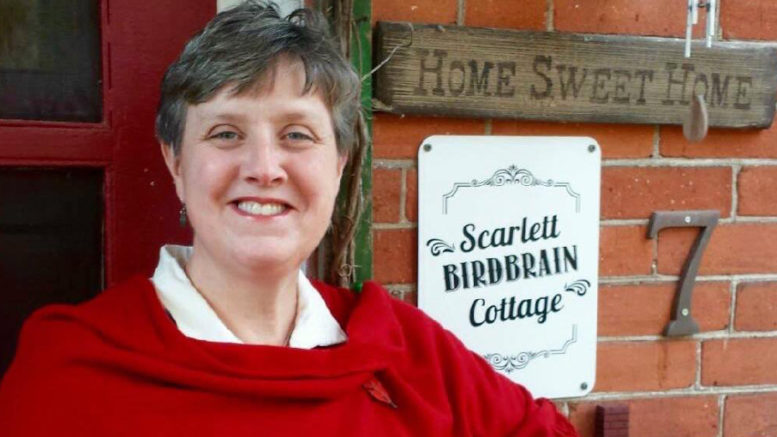Laurie Snider
Notes from the Nest
Did you know that only one in 100 laid by a turtle will survive to adulthood? Were you aware that many turtles don’t reach sexual maturity until 18 to 20 years? This means even losing one female reproducing turtle can be devastating to a local population.
May and June are the height of nesting season for turtles. They desperately need our help. Alarmingly, all eight freshwater species of turtle in Canada, are considered species at risk. This’s appalling, as these animals are one of the oldest creatures on earth. They’ve been around for some 220 million years. Realizing just how much peril these marvelous Testudines are in, is heartbreaking.
According to Turtles Kingston, the single biggest threat to turtles, is road mortality. They state Ontario has the highest density of roads in Canada and it takes an average of nine minutes for some turtle species to cross a road, leaving them highly vulnerable to being hit.
The Ontario Turtle Conservation Centre (OTCC) in Peterborough explains female turtles are frequently found crossing roadways to get to nesting sites. They lay their eggs, in soft gravel, on road sides. They prefer soft, moist soil that’s easier for them to dig in, so the eggs don’t get too dry while incubating. They often choose spots where there is low vegetation, so the eggs get plenty of heat from the sun.
Unlike birds, who sit on their nests to incubate their eggs, turtle eggs are left on their own. Once the turtles hatch, they scoot their way to the surface and head towards water, fending for themselves from birth. I checked with Turtles Kingston, about how many clutches a turtle will lay in a season. For the most part, it’s only one. However Painted turtles may lay as many as five clutches, but more often its two. No wonder, it’s so important to protect them!
Being hit by cars, isn’t the only hazard turtles face. Up to 84 per cent of snapping turtle nests, are destroyed by predators. Raccoon, skunks, foxes, coyotes and even rats will raid the nests, devouring the eggs and hatchlings.
Remember the song lyrics “they paved paradise and put up a parking lot,” well that’s another obstacle, causing a sharp decline in turtle numbers. Up to 70 per cent of wetlands, marshes, swamps and prime turtle habitat has been drained, farmed or paved over for buildings and roadways, leaving them little space to live and lay eggs.
Turtles may live up to 30 or 40 years. Some will even live an astounding hundred or more. The highest mortality, is when they’re eggs or hatchlings. According to the OTCC, adult turtles have few natural predators. It’s imperative to keep these reproducing females alive to ensure their survival. Decades of nesting and thousands of eggs must be laid, for just one hatchling to survive, in order to replace the turtle that laid it. Those are steep odds!
Thankfully, many scientists, rehab facilities, governments, volunteer groups and average citizens are engaged in heroic efforts, to support turtle conservation. I’ve learned a lot from them. They recommend, (keeping personal safety in mind), that if it’s safe to do so, helping turtles across the road. Turtles Kingston calls them, “Turtle Road Warriors.”
There are instructional YouTube videos offering demonstrations, especially with giant Snappers. Most importantly, never pick up turtles by their tails! You can break their backs. Using a blanket, flat shovel, large stick or even your car mats is advised. Remember to help the turtle across the road, in the direction that it was traveling.
Another critical piece of information I gleaned from Turtles Kingston, was the importance of reporting turtle encounters, alive, injured or even dead to Turtle Tally/Adopt a Pond/ Toronto Zoo. They have a fun and easy app, that registers the GPS co-ordinates of the location of the sighting.
This’s invaluable information, that’s being used to gather data on populations, different species and ‘hot spots,’ where the greatest road mortalities are occurring. This will help researchers, with planning and mitigating strategies that can be implemented to protect turtles.
If you do come across an injured turtle, or even a dead one, that may still contain eggs, Turtles Kingston asks you to transport it to Sandy Pines Wildlife Centre (SPWC) or to one of several holding stations listed on their website. In some cases, the eggs can be extracted, incubated and hatched. Turtles with injured shells can often be nursed back to health there.
I recently visited SPWC’s turtle infirmary. While it was sad to see so many badly wounded turtles, I’m so grateful for the efforts of all of the Turtle Warriors, who are taking such great care, to see that these remarkable creatures survive. I hope you’ll be a Turtle Road Warrior too!

